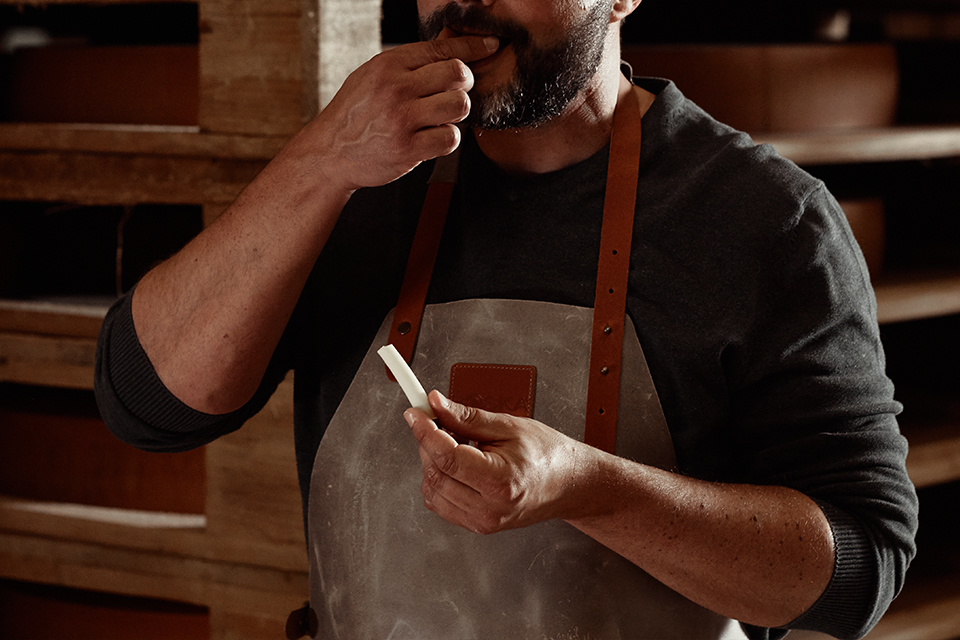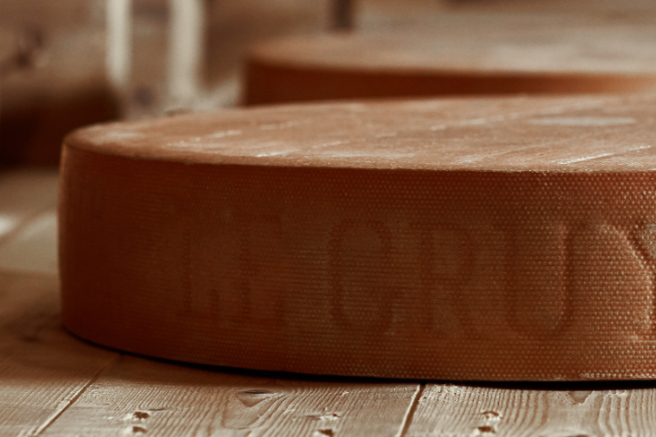The role of the Maîtres Fromagers and sensory analysis
The secret to an excellent product lies not only in the special climatic conditions but above all in the “Savoir-faire” of our Maîtres Fromagers: ancient rituals and skilful gestures that are repeated every day and have been handed down through the generations.
HEARING
Listening helps the maître to understand the progress of maturation.
It only requires a few taps with the hammer, at various points on the surface, to ascertain the maturation point and whether it is developing properly. In fact, only an attentive ear can grasp any defects that could interfere with its quality.
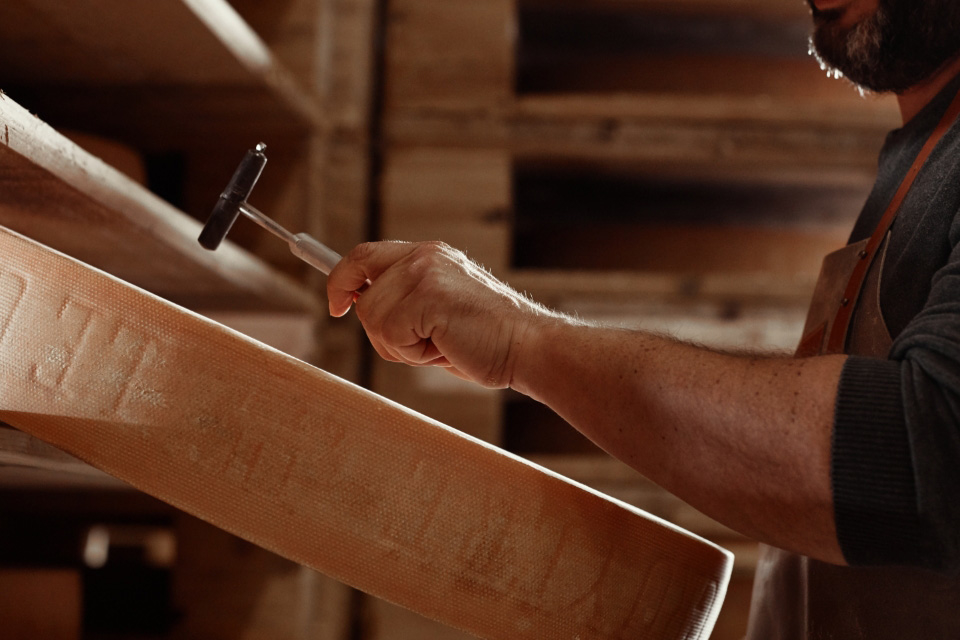
SIGHT
Visual evaluation is fundamental and concerns both the external appearance of the cheese and its paste.
First of all, the colour of the rind and its surface characteristics are observed to deduce the degree of maturation and identify any defects. Then we move on to coring to extract a sample of the paste and evaluate its uniformity, compactness and, for some cheeses, the presence of holes and their size.
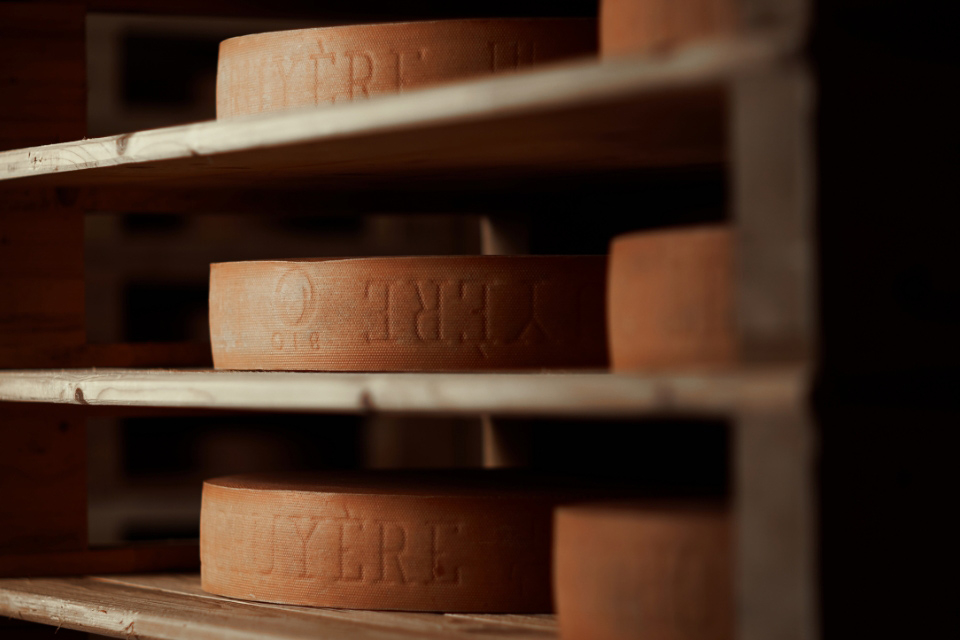
TOUCH
Texture is a key factor when evaluating the cheese.
Elasticity, graininess, hardness, crumbliness. There are many aspects to consider when dealing with the tactile analysis of a sample of its paste and are used to determine its correct ageing and its possible evolution in terms of taste.
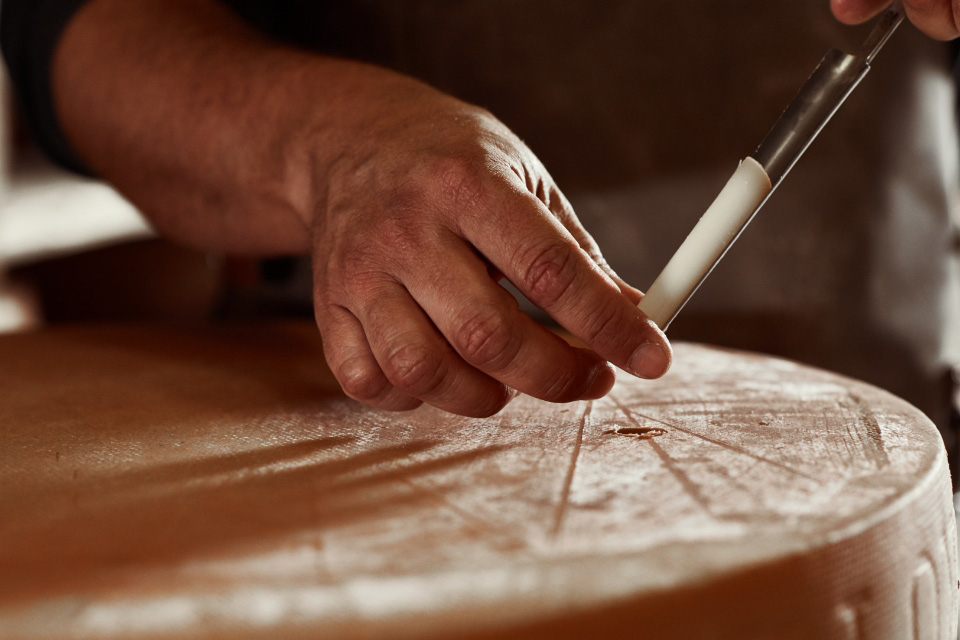
SMELL
The perception of smell occurs through inhalation and exhalation of the air before and after tasting.
The sensations perceived through the olfactory analysis can vary greatly from cheese to cheese, indicating a prevalence of lactic, floral, toasted, spicy, vegetable or animal.
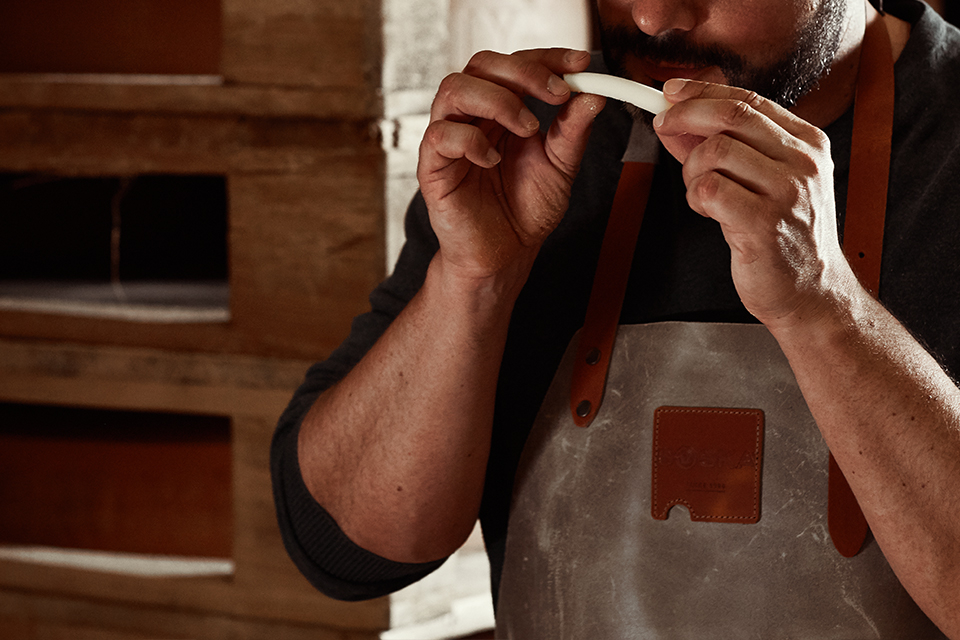
TASTE
The most fascinating test offering a complex and engaging insight.
The moment of tasting brings together the taste buds and their ability to grasp the different taste components, salty, bitter, sweet and acid, which contribute to the overall evaluation of the cheese. In this phase, the structure and gustatory persistence are also analysed.
